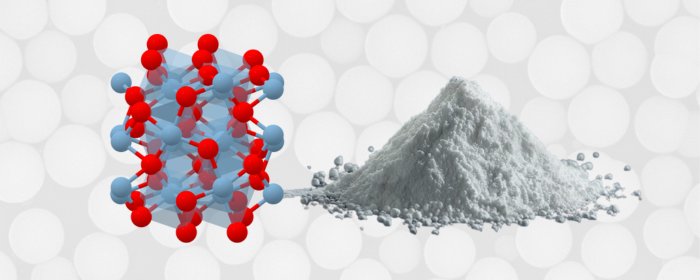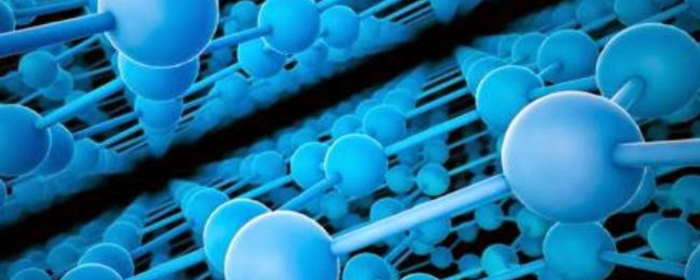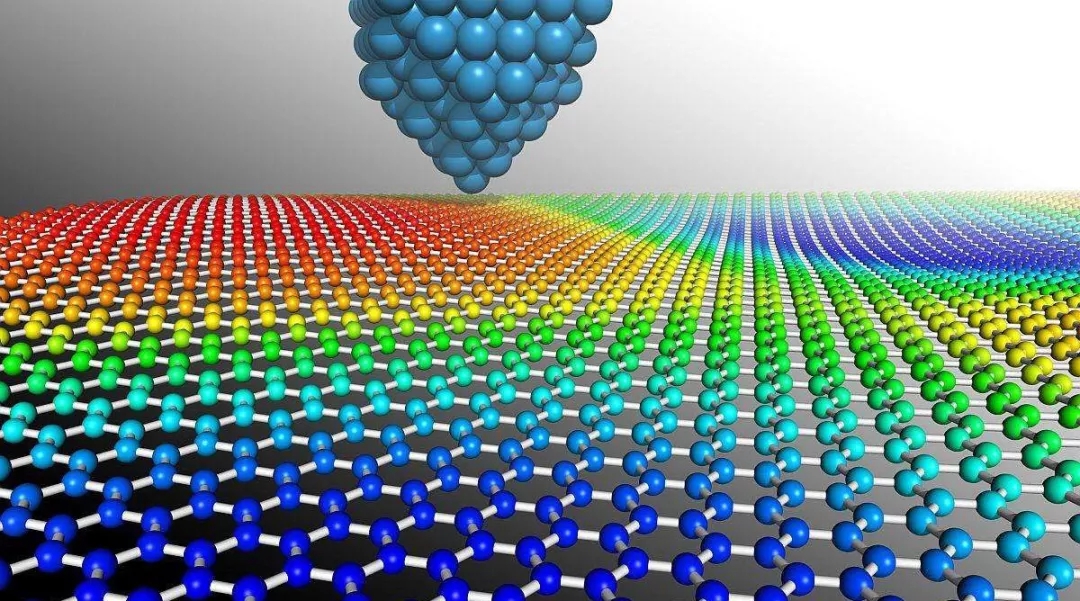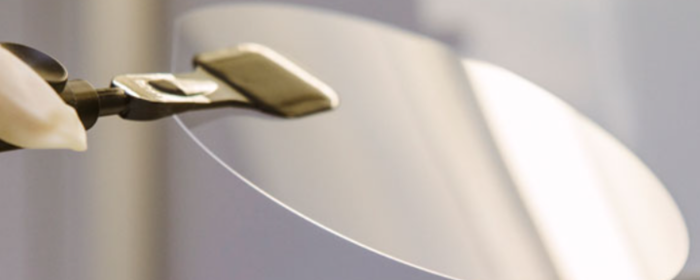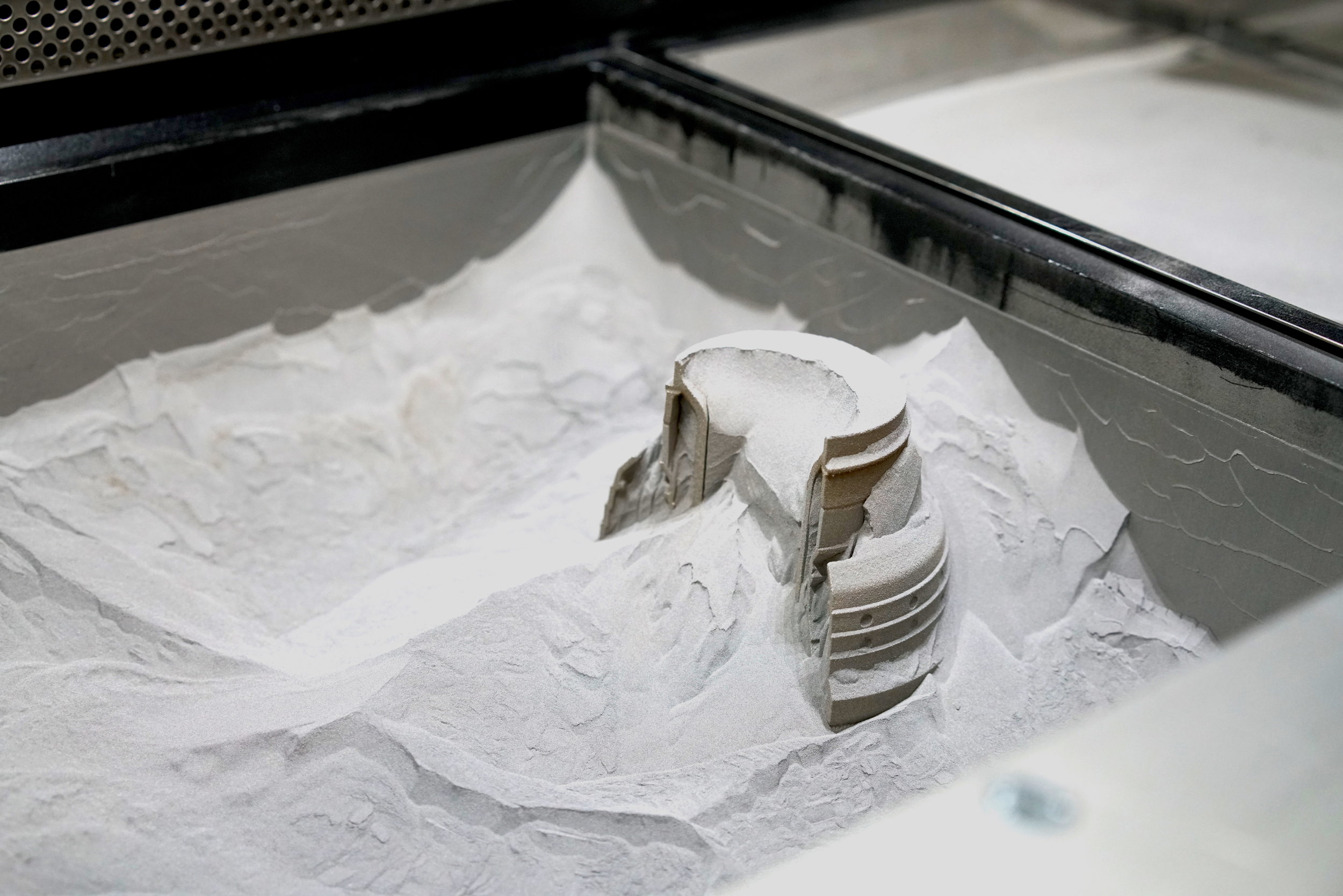

Compared to traditional manufacturing, 3D printing (also known as additive manufacturing) is as free and flexible as building a sandcastle, yet its material performance rivals that of forged parts. The core raw material for 3D printing is metal powder, and its quality directly determines the performance and reliability of the final product. So, what constitutes high-quality 3D printing metal powder?
3D printing metal powder means metal powders that are used for additive manufacturing (AM) technologies. Such powders are fused and formed in layers using an electron beam or laser and end up producing complex parts. The most prevalent 3D metal printing methods include Selective Laser Melting (SLM), Selective Laser Sintering (SLS), and Electron Beam Melting (EBM).
You can learn more about the additive manufacturing process in this article: Process Selection of Additive Manufacturing for Metal Powder
What are the common 3D printing metal powders?
The table below summarizes the most widely used types of 3D printing powders and their classic products.
|
Material Type |
Representative Materials |
Key Properties |
Typical Applications |
|
Titanium Alloy |
High strength-to-weight ratio, corrosion resistance, biocompatibility |
Aerospace components, orthopedic implants |
|
|
Stainless Steel |
Corrosion resistance, high toughness, low cost |
Automotive parts, industrial molds |
|
|
Nickel-Based Superalloys |
High-temperature resistance, fatigue resistance, oxidation resistance |
Jet engine blades, rocket nozzles |
|
|
Cobalt-Chromium Alloy |
High hardness, wear resistance, biocompatibility |
Dental restorations, artificial joints |
|
|
Aluminum Alloy |
Lightweight |
Automotive manufacturing, consumer electronics |
|
|
Copper Alloy |
High thermal conductivity |
Heat sinks, electrical components |
|
|
Tool Steel |
High wear resistance |
Injection molds, tools |
In order to expand applications, new types of powders are being created continuously. Some examples include:
All the above metal powders are available from Stanford Advanced Materials (SAM). SAM's powders are high purity, with good sphericity and particle size distributions of 15-53 μm, 45-150 μm, or customized. We also provide nano-scale metal powders.
Powder quality affects printing and final parts. Shape, size, and purity are some of the key factors. These control stability during printing and part strength. Low-quality powder brings problems like non-uniform melting, soft spots, and a rough surface. This could lead to parts failing faster or becoming dangerous.
The quality evaluation of 3D printing metal powder demands the following technical indicators to be most important:
1. Particle Size
Particle size affects powder flowability, packing density, and printing resolution. In general, more uniform particle sizes mean more stable printing. The typical particle size range is 15-45μm, but various values are required for special purposes. Powders as fine as 15-53 μm are best suited for high-precision parts, while coarse powders with particle sizes between 53-150μm are suitable for large-sized parts.
Figure 1 shows an automated measurement of powder particle size distribution. (a, b) and (c, d) correspond to Powder A and Powder B, respectively. Powder B has a lower size limit of ~25 μm, while Powder A contains many sub-25 μm particles. Despite Powder A’s larger average size, its distribution is more uniform.
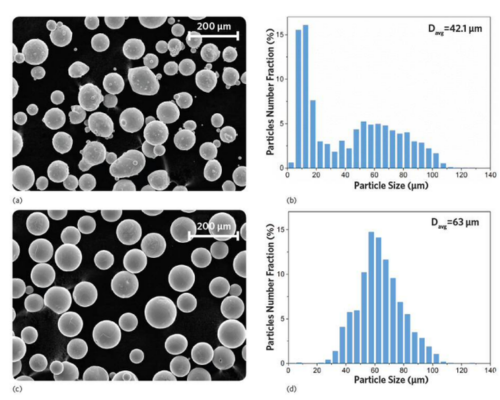
Fig 1. Measurement of powder particle size distribution
2. Sphericity
Highly spherical particles improve flowability and packing density, enhancing print quality. The closer to a perfect sphere, the better the flow and layer uniformity.
Figure 2 displays SEM micrographs of Ti-6Al-4V (a, b) and TiB₂ (c, d) powders.
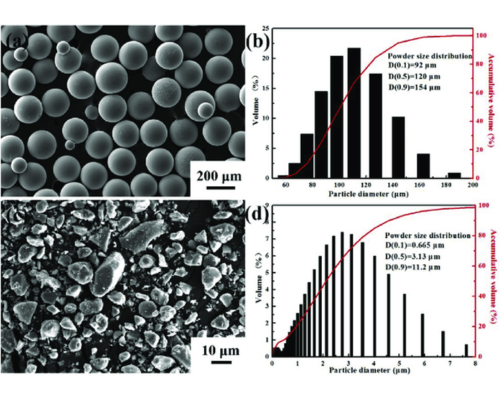
Fig 2. Ti-6Al-4V (a, b) ,TiB₂ (c, d)
3. Purity
Impurities must be strictly controlled to avoid harmful reactions or degraded part performance. For stainless steel powders, carbon and oxygen content must be maintained at specific limits in order to impart material toughness and resistance to corrosion. For titanium alloy powders, oxygen content needs to be maintained below 1000 ppm, as anything above this may lead to brittleness and cracking.
4. Flowability
Good flowability facilitates even spreading of powder, minimizing interlayer defects. It is usually expressed by powder flow curves or flow index—numerical values in which higher is preferable.
5. Characteristics of Melting
Melting characteristics determine energy absorption and quality of fusion. The ideal powder should possess the right melting point and heat conductivity to allow even melting and high-speed solidification, reducing internal stresses and cracking.
6. Consistency
Every batch has to be very consistent in chemical structure and physical properties for process reliability and consistency of parts. Batches should be tightly controlled and regulated.
7. Absorption of Moisture & Anti-Oxidation
Low hygroscopic powders with good oxidation resistance are providing longer storage life and elimination of printing defects. Inert gas storage and anti-oxidation additives are common countermeasures.
Based on the above explanation, we can simply summarize the following conclusions:
Special 3D printing metal powder of high quality is needed to produce accurate, high-performance parts. Understanding the important parameters—particle size, sphericity, chemical purity, and flowability—enables one to evaluate powder quality correctly.

